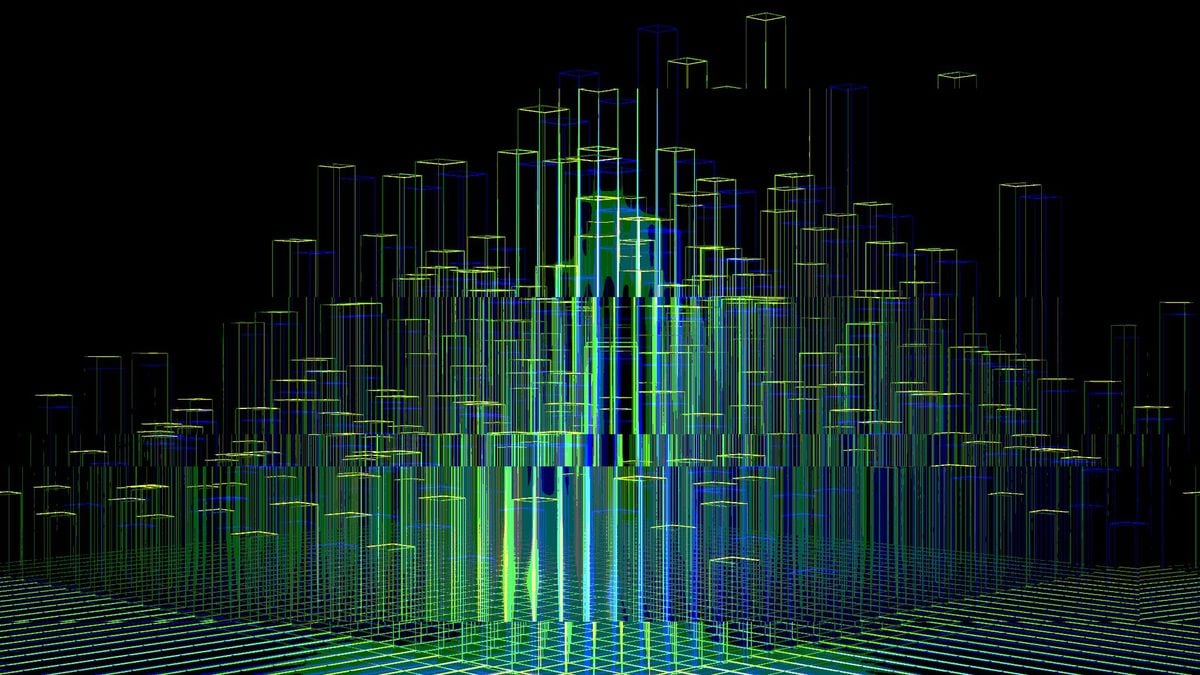Crypto represents digital currency, and the digital realm is predominantly inhabited by automated entities.
The intricate machinery of crypto arbitrage, MEV bots, social media bot cohorts, algorithm-driven content streams, code-generated art, AI illustrations, and the array of Zapier agents and automated systems operate surreptitiously in the backdrop of our digital interactions, often unnoticed by us humans.
In a previous discourse, the inevitability of an increasing robotic presence was highlighted, emphasizing that Web3 serves as the optimal economic and financial arena for the burgeoning machine economy. It is worth noting that many individuals are so deeply entrenched in software usage that they could be deemed software cyborgs themselves.
Lex Sokolin, the visionary behind Generative Ventures, previously held the esteemed position of Global Fintech Co-Head at ConsenSys, a pioneering blockchain technology firm.
Generative Ventures has been actively investing in cutting-edge enterprises since the middle of 2023, focusing on the convergence of crypto, AI, and fintech. While our overarching thesis was compelling enough to embark on this journey, the practical realities on the ground are beginning to crystallize. Today, we aim to delve deeper into the ongoing developments and elucidate the trends in AI and DePIN (decentralized physical infrastructure) propelling this sector forward.
Distinguishing On-chain and Off-chain Dynamics
A fundamental observation is the distinction between on-chain and off-chain activities. While this demarcation may seem apparent, it is crucial to underscore. In the realm of finance, traditional dollar bank deposits occur off-chain, whereas DAI transactions take place on-chain. Assets tokenized from the physical world exist off-chain, contrasting with wrapped tokens or liquid staking mechanisms that operate on-chain. Conventional documents like passports and licenses are stored off-chain, whereas POAPs and NFTs are securely maintained on-chain. The core concepts of money, financial tools, and identity can manifest in disparate environments.
Similarly, artificial intelligence can straddle both on-chain and off-chain domains, transitioning to Web3 intermittently to execute tasks. In such scenarios, the necessity arises for services resembling oracles or on/off ramps to facilitate the seamless integration of machine intelligence.
The same impetus that drove fintech innovations to create embedded financial solutions (e.g., Plaid, Stripe) could potentially furnish GPTs with the requisite API infrastructure to navigate the crypto landscape. Analogous to Moonpay’s role in facilitating transactions, who will serve as the Moonpay for ChatGPT? Furthermore, if we integrate AI into trustless ecosystems, how do we ensure its integrity and validate its outcomes?
We anticipate that the secure custody and governance of AI agents within the crypto sphere will emerge as a pivotal value proposition of Web3.
Several teams are actively exploring the integration of crypto technologies, such as ZK proofs, into the operational framework of machine learning models. This approach aims to validate the actions of specific robots conclusively, guarding against scenarios akin to falling victim to fraudulent schemes like Bernie Madoff’s. Although this methodology is still in its nascent stages, envisioning the value of verifying interactions with the correct black box holds immense potential.
Concurrently, efforts are underway to migrate the entire LLM and neural network architecture onto decentralized infrastructures. Given the open-source nature of much of the generative AI landscape, akin to crypto, the deployment and sustenance of numerous open-source models on protocols that decentralize computational loads are theoretically feasible. Despite the endeavors of talented teams in this domain, this transition remains largely speculative. Even centralized AI entities are yet to decipher the demand dynamics and profitable unit economics. Fragmenting the provision of such services across protocols and DAOs at this juncture, in our assessment, is premature.
Decentralized Physical Infrastructure (DePIN) Unveiled
Delving deeper into the technological stack unveils DePIN, decentralized physical infrastructure. Basic DePIN frameworks leverage coin-protocol incentives instead of more contemporary tokenomics paradigms.
For instance, participating nodes contribute hardware resources like storage, compute power, GPU capabilities, or training data to a network, receiving rewards commensurate with the work performed on their devices, akin to Bitcoin’s proof-of-work mining mechanism. We anticipate that, akin to Helium, most DePINs will evolve beyond functioning as mere coins, transitioning into dApps operating atop computational blockchains like Peaq, Solana, or an EVM rollup.
While Web3 initially leveraged centralized cloud services to establish decentralized networks, the viability of this approach for decentralized AI remains uncertain, given the associated costs and demand dynamics. Centralized AI providers exhibit superior efficiency, organization, and computational prowess compared to their protocol-first counterparts. Consequently, we posit that scalable DePINs could unlock substantial resources for on-chain crypto-AI integration.
Another compelling aspect of DePIN is its role in onboarding machines onto Web3, as machines will necessitate DeFi solutions and access to intelligence-as-a-service. In a distant future scenario, decentralized fleets of vehicles might download cutting-edge self-driving models from DePIN AI networks, managed by diverse DAOs and incentivized through tokens. Preliminary experiments in this direction are already underway.
Moreover, frameworks facilitating the connection, standardization, and management of AI agents with diverse objectives are beginning to surface. Projects like Autonolas are actively developing bots for market trading activities and governance deployments. For instance, Botto, a generative AI model curated by a DAO and incentivized through a token feedback loop, generates art pieces. Similarly, Numerai, a hedge fund hosting a token-incentivized competition for data scientists to craft AI algorithms for a trading software brain, exemplifies the diverse landscape of AI applications. This ecosystem is poised to host a myriad of entities—ranging from simplistic to intricate and enigmatic.
Lastly, it is imperative to delineate the spectrum of AI services. In one scenario, AI functions as a narrow feature enhancing applications. For instance, a digital wallet might incorporate conversational capabilities about the tokens and investments it manages. Alternatively, a 10-K company filing could be interrogated using a custom financial GPT on a website. While convenient, such enhancements do not herald structural transformations within industries.
Conversely, a scenario where OpenAI evolves into the new iOS, with its GPT store akin to an app store, could redefine the tech landscape. In this envisioned future, the tech company emerges as the primary interface for accessing machine intelligence applications embedded within its platform. AI transcends being a mere feature, transforming into a comprehensive platform disseminating solutions for a myriad of general problems. In this paradigm, crypto assumes a subsidiary role among the plethora of AI functionalities.
A significant concern in this scenario is the centralization of AI agents under a single provider, posing substantial risks across data, privacy, and financial domains. Custodial arrangements inherently introduce principal-agent dilemmas, necessitating legal and regulatory frameworks to enforce fiduciary responsibilities. In the realm of big tech, regulatory frameworks safeguarding individuals from potential risks associated with centralized AI are inevitable.
Empowering AI Agents through Self-Custody
The antidote to the risks posed by centralized custody lies in the self-custody of information and AI agents within the Web3 ecosystem. While the genesis of GPTs might occur on centralized platforms, the ability to transfer trained models into a crypto wallet for ownership presents a compelling solution. In a landscape where multiple successful open-source models coexist, some efficiently operating on decentralized infrastructures, we envisage that the custody and governance of AI agents within the crypto realm will emerge as a critical value proposition of Web3.
Presently, projects focused on validating the authenticity of digital media in the age of AI closely align with this concept. Authenticity and integrity are paramount in this context.
Another illustrative example is the integration of NFT minters with image generation or LLM engines, aligning the fruits of machine labor with the vibrant marketplaces of Web3 DeFi. However, commercial activities surrounding such assets remain marginal today—attributable to factors like the nascent state of NFT markets, the quality of machine-generated content, or the limited utility of digital assets.
In essence, this evolving landscape presents a captivating design space for entrepreneurs. Since the inception of Generative Ventures, we have been consistently amazed by the diverse creativity and fervor exhibited by technologists exploring the realm of possibilities and charting a path towards the future.






